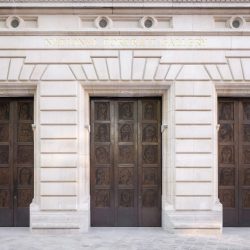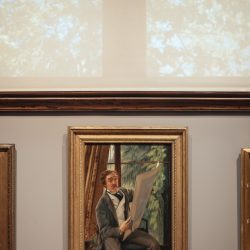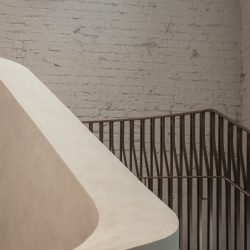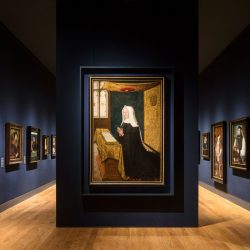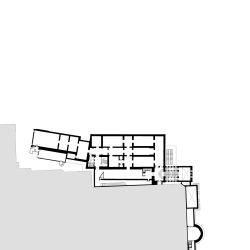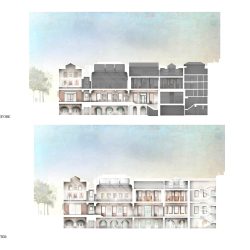
Purcell . Jamie Fobert Architects
London’s National Portrait Gallery was the first portrait gallery in the world. It is housed in a Grade I-Listed building, which, in 1896, was built specifically to create a permanent home for the national collection of portraits. The Inspiring People project has focused on revealing and making the most of every part of this handsome and richly decorative building.
Led by Jamie Fobert Architects, alongside heritage architects Purcell and a highly skilled design team, there has been a complete refurbishment and reconsideration of the building. The architectural interventions can be understood as a number of parallel projects, from a new public forecourt, which leads to a generous entry hall, to the creation of a dynamic new learning centre. The project has opened up windows, doors and areas that have been hidden for decades. By creating a new accessible entrance into the historic façade, the building has been reorientated to face the city, presenting a generous welcome and connecting the Gallery with the vibrant area of London on its doorstep.
Alongside the architectural project, the National Portrait Gallery has undertaken a comprehensive re-display and reinterpretation of the world’s largest collection of portraits which places people at its heart, to tell a richer story of history and culture in the United Kingdom.
Central to the transformation of the Gallery is the new accessible entrance and public forecourt, which repurposes the previously under-used area outside the Gallery. To create the new entrance, three of the original windows on the north façade have been altered to form three 4-metre-high doorways into the Gallery. The new bronze doors, designed by Jamie Fobert Architects, feature 45 specially commissioned bronze portraits of women by artist Tracey Emin.
The new doorways lead into a generous new entrance hall, which is more than double the size of the Gallery’s original foyer. The removal of some original walls and the design of large beams to carry the load of the building above was overseen by the structural engineers Price and Myers. Ensuring visitors encounter art as soon as they enter the building, the new hall includes a presentation of historic and contemporary busts on plinths, designed by Nissen Richards Studio.
The project has increased public space by around a fifth, including converting office space into top-lit galleries in the newly named Weston Wing, which will house the Gallery’s contemporary collection. Here, a new steel and timber stair for visitors winds all the way up from the lower basement to the top floor.
Jamie-Fobert-Architects-National-Portrait-Gallery-NPG-Learning-centre-stair-Jim-Stephenson-
A major element of the project has been the creation of The Mildred and Simon Palley Learning Centre, which will provide a better learning experience for children, young people, community groups and adult learners. The two levels of the new Learning Centre are joined with a dedicated lift and a new, curving stair within a volume cut out of the building.
The project has also included the complete restoration of the gallery spaces: blocked windows have been opened, rooflights covered in the Second World War have been reinstated and infilled arches have been reopened. The wooden floors that had faded in sunlight have been brought back to the deep lustre of the original teak. The ceilings of all the galleries have been restored and unified with a single colour. Lighting, which used to hang at the cornice level at the centre of each gallery, has been lifted by engineers Max Fordham up into the lanterns of Floor 3 galleries, so it virtually disappears from view.
_




